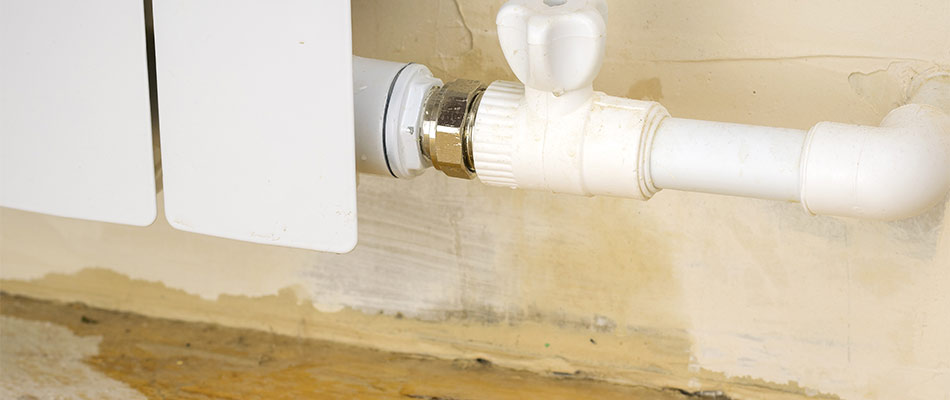Just how to Locate and Repair Work Water Leaks-- A Comprehensive Overview
Just how to Locate and Repair Work Water Leaks-- A Comprehensive Overview
Blog Article
Each person has their own individual idea in relation to Top leak detection hacks.

Early discovery of leaking water lines can alleviate a possible catastrophe. Apart from saving you cash, it will minimize the worry and stress. The moment you discover a leak, calling your plumber for fixings is the very best option. However, some tiny water leaks might not show up. Right here are some hacks that assist if you can not identify it with your naked eyes.
1. Analyze the Water Meter
Every home has a water meter. Inspecting it is a proven manner in which aids you uncover leakages. For beginners, turn off all the water sources. Guarantee no one will purge, use the faucet, shower, run the washing machine or dishwasher. From there, go to the meter and watch if it will change. Because nobody is using it, there ought to be no movements. That indicates a fast-moving leakage if it moves. Furthermore, if you find no changes, wait an hour or 2 and also inspect back once again. This implies you may have a slow-moving leak that can even be underground.
2. Inspect Water Consumption
Analyze your water costs as well as track your water usage. As the one paying it, you should see if there are any kind of disparities. If you find sudden changes, despite your intake being the same, it implies that you have leakages in your plumbing system. Bear in mind, your water expense ought to fall under the same array each month. A sudden spike in your costs suggests a fast-moving leakage.
A constant increase every month, also with the same routines, reveals you have a sluggish leakage that's additionally slowly intensifying. Call a plumber to extensively check your property, particularly if you really feel a warm location on your flooring with piping underneath.
3. Do a Food Coloring Test
When it comes to water intake, 30% comes from commodes. If the shade in some way infiltrates your bowl during that time without flushing, there's a leak between the tank as well as bowl.
4. Asses Exterior Lines
Don't fail to remember to inspect your outside water lines as well. Test spigots by connecting a yard pipe. Needs to water permeate out of the link, you have a loosened rubber gasket. Change this and also make certain all links are limited. If you have actually got an automatic sprinkler, it will certainly aid get it professionally examined and maintained annually. One little leakage can lose tons of water and spike your water costs.
5. Examine and also Assess the Circumstance
Homeowners need to make it a behavior to check under the sink counters and also also inside cabinets for any bad odor or mold and mildew development. These two red flags indicate a leakage so timely attention is required. Doing routine assessments, even bi-annually, can conserve you from a major issue.
If you know your house is currently old, keep a careful eye on your heaters, pipes, pipes and so on. Look for discolorations as well as weakening as a lot of home appliances and also pipes have a life expectancy. They will certainly also normally deteriorate because of damage. If you presume dripping water lines in your plumbing system, don't wait on it to rise. Call a professional plumber right away so you don't end up with an awful mess in your house.
Early detection of leaking water lines can alleviate a possible calamity. Some little water leakages may not be visible. Checking it is a surefire method that assists you find leaks. One tiny leak can squander lots of water as well as surge your water expense.
If you presume dripping water lines in your plumbing system, don't wait for it to intensify.
WARNING SIGNS OF WATER LEAKAGE BEHIND THE WALL
PERSISTENT MUSTY ODORS
As water slowly drips from a leaky pipe inside the wall, flooring and sheetrock stay damp and develop an odor similar to wet cardboard. It generates a musty smell that can help you find hidden leaks.
MOLD IN UNUSUAL AREAS
Mold usually grows in wet areas like kitchens, baths and laundry rooms. If you spot the stuff on walls or baseboards in other rooms of the house, it’s a good indicator of undetected water leaks.
STAINS THAT GROW
When mold thrives around a leaky pipe, it sometimes takes hold on the inside surface of the affected wall. A growing stain on otherwise clean sheetrock is often your sign of a hidden plumbing problem.
PEELING OR BUBBLING WALLPAPER / PAINT
This clue is easy to miss in rooms that don’t get much use. When you see wallpaper separating along seams or paint bubbling or flaking off the wall, blame sheetrock that stays wet because of an undetected leak.
BUCKLED CEILINGS AND STAINED FLOORS
If ceilings or floors in bathrooms, kitchens or laundry areas develop structural problems, don’t rule out constant damp inside the walls. Wet sheetrock can affect adjacent framing, flooring and ceilings.
https://www.servicemasterbyzaba.com/blog/how-to-detect-water-leakage-in-walls/

I'm very drawn to Locating water leaks and I'm hoping you enjoyed the entire article. Enjoyed reading our article? Please share it. Help someone else discover it. We enjoy reading our article about Hacks to detect leaks.
Report this page